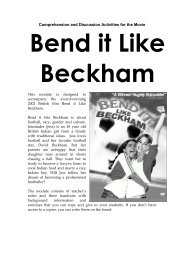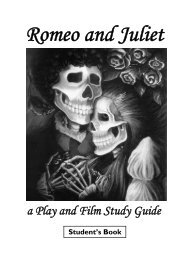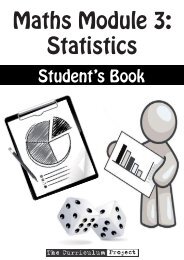Teacher's Guide - The Curriculum Project
Teacher's Guide - The Curriculum Project
Teacher's Guide - The Curriculum Project
- No tags were found...
You also want an ePaper? Increase the reach of your titles
YUMPU automatically turns print PDFs into web optimized ePapers that Google loves.
5. Money & BarterDiscussionDiscussion1. Put students into groups. Ask them to think of a way to define the word‘money’. Give them about five minutes to think and write down their ideas.<strong>The</strong>n ask them to give you their answer written on a piece of paper. Readout each answer, write it on the board, and discuss briefly.2. Ask them why a US$50 is more valuable than a notebook. If students getstuck ask them what can you do with a $50 dollar note that you can’t dowith a notebook.<strong>The</strong> reason why a US$50 note is more valuable than the notebook is because of its exchangevalue.You can exchange a US$50 note for a lot more things than a notebook.Brainstorm3. Ask students to give you names of world currencies. (<strong>The</strong>re are 178 differentcurrencies in the world.)Exchange RatesAsk one student to read aloud the paragraph on ‘Exchange Rates’. Askthe students:If I exchanged US$100 for Burmese kyats, how many kyats would I receive?Answer: 125,000 kyats.Different things used as moneyAsk one student to read the paragraph aloud.Yap Stone MoneyAsk one student to read aloud the paragraph about Yap stone money. <strong>The</strong>nask the students to read the paragraphs to themselves for a few minutes.Ask questions to check understanding:How big are the largest Yap stones?Answer: About four meters in diameter.How do Yap people calculate the value of their stone money?Answer: It depends on the size and history of the stone.Do they usually use the stones as money?Answer: No, they usually use US dollars.What do wealthy people do with the stones?Answer: <strong>The</strong>y put them outside their houses.Discussion4. Put students into groups of 3-5. Ask them to discuss these questions andwrite down their ideas for 5-10 minutes. <strong>The</strong>n elicit ideas from different groupsand check agreement with the rest of the class.For the different kinds of money used in Burma, you might mention: gold and silver, precious amdsemi-precious stones, animals (cows, goats, chickens), etc.<strong>The</strong> <strong>Curriculum</strong> <strong>Project</strong> ECONOMICS: an introduction - Teacher’s <strong>Guide</strong>7



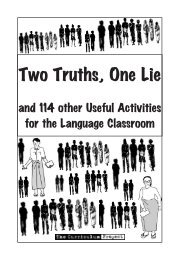
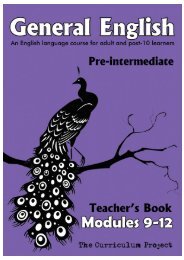
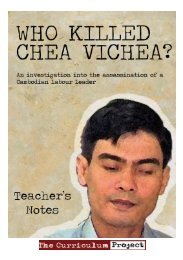

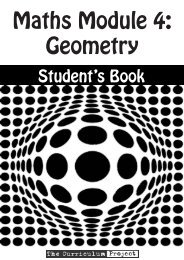

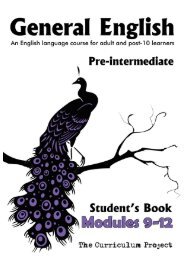

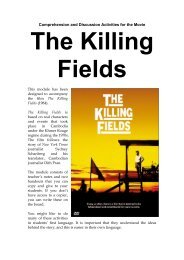
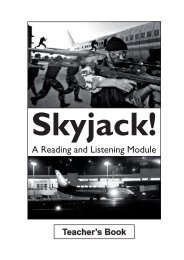
![[Eng] Nov 2012 DRAFT - The Curriculum Project](https://img.yumpu.com/45590859/1/184x260/eng-nov-2012-draft-the-curriculum-project.jpg?quality=85)
